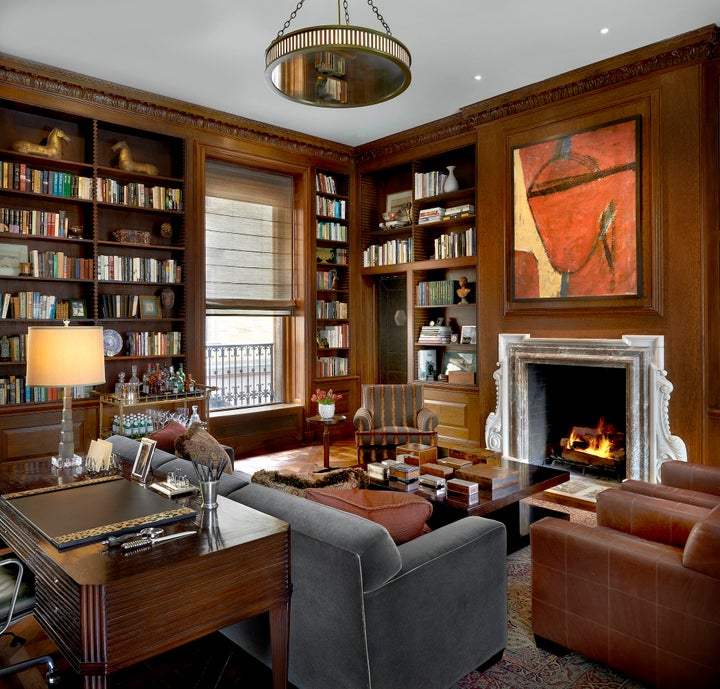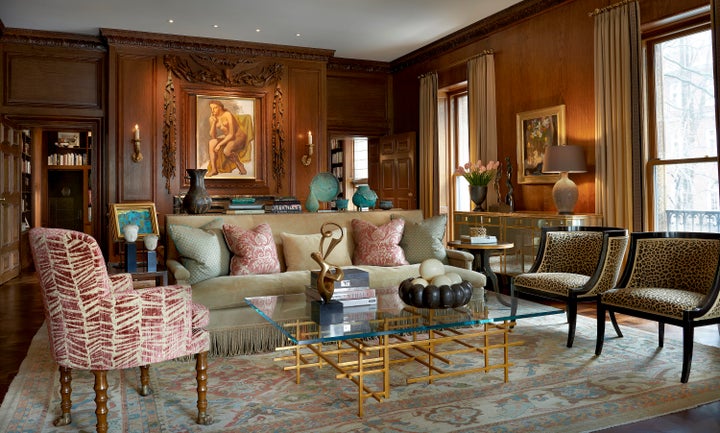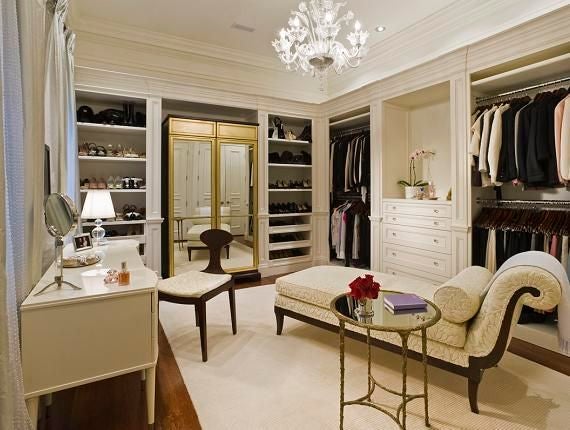Marie Kondo’s books on decluttering and tidying up have sold over 5 million copies worldwide, spent weeks on every bestseller list, been translated into dozens of languages and even worked their way into our library. We’ve all paged through our office copies of “The Life-Changing Magic of Tidying Up” and “Spark Joy,” and come to the same conclusion: Marie Kondo and her KonMari Method takes paring down too far.
We’re mentioning this now because Marie gave a presentation at the Chicago Humanities Festival on April 28th, and we went to hear her talk on the KonMari Method for curiosity’s sake. We understand why her message to get rid of anything that doesn’t “spark joy” is so compelling. But in truth, it’s just a charming way to advocate for another extreme diet. We prefer to embrace that old adage that never lets us down: Everything in moderation.

Like a cat, some of the furnishings in this room have had multiple lives as they’ve been used in new ways in this homeowner’s different homes over the years. (Image: Jessica Lagrange Interiors)
At first, we were inspired by Marie Kondo’s “joy-sparking Tokyo home” which was, in fact, an April Fool’s spoof on Apartment Therapy. But spoof or not, the vintage Victorian pad painted pure white and furnished minimally with svelte, sweet, mostly white pieces offers up a relevant lesson on the deficits of the KonMari Method. Books, art, knick knacks and the accouterments of daily life, from household supplies to clothing, are in scarce supply in this place. As interior designers, we see the merits of the KonMari Method, but to channel that iconic Wendy’s commercial from the 1980s, “where’s the beef?”
Expressively speaking, this imagined Marie Kondo home has the personality, passion and warmth of a blank wall. Few people live this way. I guarantee it won’t work for any of us, or 99 percent of our clients. Less is a bore, as starchitect Robert Venturi once said.
Plus, as the Apartment Therapy spoof suggests, keeping up with the KonMari Method takes discipline and restraint. The parody jokes that Marie’s biggest indulgence is “carving out 20 hours a week to sit down and examine each item I own, decide whether I want to keep or discard it and then choose the best place for the things I decide to keep.”
Satire or not, being perpetually ordered and minimal is a never-ending effort that takes time and self-control. Sure, less stuff takes less time to care for, but considering every single item we already own all at once, then being disciplined forever, is unrealistic. That’s where moderation gets our admiration once again, or at least establishing order in stages (which we have all done—perhaps repeatedly but also effectively for clutter control).
The KonMari Method is too excessive for us, and we suspect a use of more time and energy than necessary. The extra time it takes can and should be devoted to what really counts (family, friends, sleep and more!).
It also seems a little trite. Do all our possessions really need to spark joy? And should the mundane things of life be so precious that re
But most significantly, paring down using the KonMari Method can be expensive and leave us with lingering regrets. We’re not disputing the common sense advice Marie dispenses, such as the importance of getting rid of things you don’t use—and won’t recycle. She points out that it’s highly unlikely that we’ll ever use these things again, so it’s time to let them go. But this theory can be far from spot-on, as our design practice has proven to us time and again.
In truth, Marie’s philosophy is too rigorous, and can be wasteful in the long run. Here’s why.

Possessions express our passions and personalities and should not be reduced to the bare bone numbers Kondo suggests. (Image: Jessica Lagrange Interiors)
Forget Diamonds: Furnishings Are Forever Too
As luxury interior designers, we must point out that furnishing a home can be incredibly expensive; quality costs. And it’s no secret that most of us tire of things after a while. But when furnishings—be it the foundational pieces such as sofas and armoires or luxuries such as art and accessories—no longer “spark joy,” it doesn’t mean it’s time to get rid of them.
Obviously, upholstery and fine wood pieces can be redone, which gives them a whole new look and lease on life. But it can pay to also store them in a basement or storage locker if budget allows (and for our clients, budget does allow this luxury). We’ve seen clients recycle incredible pieces they’ve outgrown or gotten tired of in second homes, or give them to their adult children, who not only need them but derive plenty of joy from the sentimental value and style of these beloved items.

Who are we without our books and mementos? There are ways to edit essentials with sensitivity in mind, and accommodate almost everything effectively and attractively in a home.
(Image: Jessica Lagrange Interiors)
Books and Memorabilia Are A Source of Eternal Pleasure
Here’s where Marie is plain wrong. Many of us do really read novels we bought 20 years ago; a close friend of mine is finally pouring through the first edition of John Irving’s “A Widow for One Year” she bought in 1998 and can’t put it down, and will tackle the “A Thousand Acres” by Jane Smiley from 1991 next. It’s important to have a healthy library, albeit well-organized, if space allows. And it’s important to hang on to beloved books. If and when I have grandchildren, they can read the very same classics their fathers did because I still have them—well protected, organized and ready to be read.
And my adult children now love looking back at their files of photos, school report cards, class and team lists, cards and more that are well organized but fairly bulky (each one takes up a full file drawer). They can do what they want with them, but it is important for them to make that decision as adults—which is why they should not be tossed.

Clothing doesn’t have to “spark joy” to be worth hanging on to for a long time. Plus, as we all know, styles come back and designer clothing is astronomical to replace.
(Image: Boca Do Lobo)
Those Special Designer Clothes Don’t Need To Go
With her KonMari Method, Marie infers that once we tire of a piece of clothing or our size changes, it’s time to pass it on. This is totally not true. Who hasn’t lost interest in a great dress or bag for a year or two, then broken it out and worn it to death once again. And whose weight doesn’t fluctuate a bit? Okay, maybe there is someone who’s always the same size, but we don’t know them. And everyone in our office has successfully lost weight to fit into something at one time or another.
Marie Kondo needs to loosen up, live a little and have a few kids. Then we’d like to hear what she has to say about tidying up.
